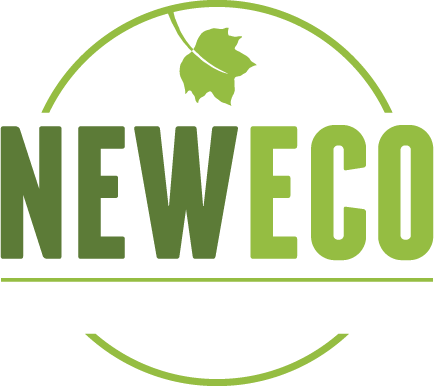
New York City, with its iconic skyline and dense urban environment, is often seen as a concrete jungle. But over the past few decades, a growing number of green roofs have been transforming this cityscape, offering sustainable solutions to some of the biggest environmental challenges facing the metropolis. From reducing energy costs to improving air quality, green roofs are becoming a vital part of the urban fabric, blending nature with architecture in the heart of one of the world's busiest cities.
What is a Green Roof?
A green roof, sometimes referred to as a "living roof," is a rooftop that is partially or completely covered with vegetation, along with a waterproofing membrane, drainage system, and a growing medium (soil or substrate). Green roofs can range from small, simple plantings to expansive gardens or even parks, depending on the size and structure of the building.
There are two main types of green roofs:
Extensive Green Roofs: These are lightweight systems with a thin layer of soil, designed for low-maintenance plants like succulents, grasses, and mosses. They require little water and upkeep, making them ideal for commercial buildings.
Intensive Green Roofs: These are more complex and can support a wider variety of plants, including shrubs, flowers, and even small trees. Intensive green roofs are typically heavier and require more care, but they can provide green spaces for people to enjoy.
Why Green Roofs Matter for New York City
With nearly 8.5 million residents and over 35,000 buildings, New York City faces a number of environmental challenges that green roofs can help address. From managing stormwater runoff to improving public health, these living roofs offer a range of benefits for the city and its residents.
Combatting Urban Heat Island Effect
New York City, like many urban areas, experiences the "urban heat island" effect, where buildings and pavement absorb and retain heat, causing temperatures to rise above those in surrounding rural areas. This phenomenon leads to increased energy demand for air conditioning, poorer air quality, and a higher risk of heat-related illnesses.
Green roofs help to mitigate the urban heat island effect by providing natural cooling. Plants absorb sunlight and release moisture into the air through a process called evapotranspiration, which cools the surrounding environment. Studies have shown that green roofs can reduce rooftop temperatures by as much as 30–40°F, providing a much-needed respite from the heat.
Reducing Stormwater Runoff
One of the biggest environmental challenges in NYC is managing stormwater runoff. When heavy rainfalls hit the city, the large amounts of impermeable surfaces—roads, sidewalks, and rooftops—prevent water from being absorbed into the ground. Instead, the water flows into the city’s already-overburdened stormwater system, contributing to flooding and water pollution.
Green roofs help by absorbing and slowing the flow of rainwater. The soil and plants on a green roof can capture stormwater, reducing runoff by up to 75%. This decreases the risk of flooding, alleviates pressure on the city’s drainage systems, and helps prevent polluted water from flowing into local rivers and waterways.
Improving Air Quality
Green roofs act as natural air filters. Plants absorb carbon dioxide and release oxygen, improving air quality. They can also trap particulate matter, such as dust and pollen, that pollutes the air. In a city like New York, where air pollution is a concern, every bit of greenery helps to create a healthier environment for residents and visitors.
Energy Efficiency and Cost Savings
Green roofs can significantly improve a building’s energy efficiency. During the summer, the plants and soil on a green roof provide insulation, reducing the amount of heat that enters the building. This can lower the need for air conditioning and reduce energy consumption, leading to lower utility bills.
In the winter, the insulating effect of a green roof helps to retain heat inside the building, reducing heating costs. Over time, the energy savings can offset the initial installation cost, making green roofs a financially beneficial choice for many building owners.
Enhancing Biodiversity
Green roofs provide much-needed habitat for wildlife, particularly in densely developed urban areas. Birds, bees, butterflies, and other pollinators can thrive on green roofs, creating miniature ecosystems in the heart of the city. This biodiversity is crucial not only for the local environment but also for the overall health of ecosystems across the region.
By creating these green oases, cities can help mitigate the loss of natural habitats caused by urbanization and promote the preservation of species that are vital to a healthy planet.
Creating Green Spaces in a Crowded City
One of the most unique benefits of green roofs is their ability to create new green spaces in cities where space is limited. In a densely packed urban area like NYC, finding land for parks and green spaces can be challenging. However, rooftops are often underutilized, making them the perfect place to create green havens for relaxation, gardening, or urban agriculture.
Intensive green roofs, in particular, can offer a range of recreational opportunities, including rooftop gardens, walking paths, and even dining areas. These spaces provide a valuable escape from the hustle and bustle of city life and help foster a deeper connection between urban dwellers and the natural world.
Green roofs are an exciting, sustainable solution for New York City, offering an innovative way to address urban challenges while enhancing the quality of life for residents. From cooling the city to improving air quality, reducing stormwater runoff, and creating green spaces, green roofs represent the future of urban design. With continued support and investment, New York City can become a model for other cities around the world in terms of integrating nature into urban landscapes, proving that even in a concrete jungle, there’s always room for green.


Comments